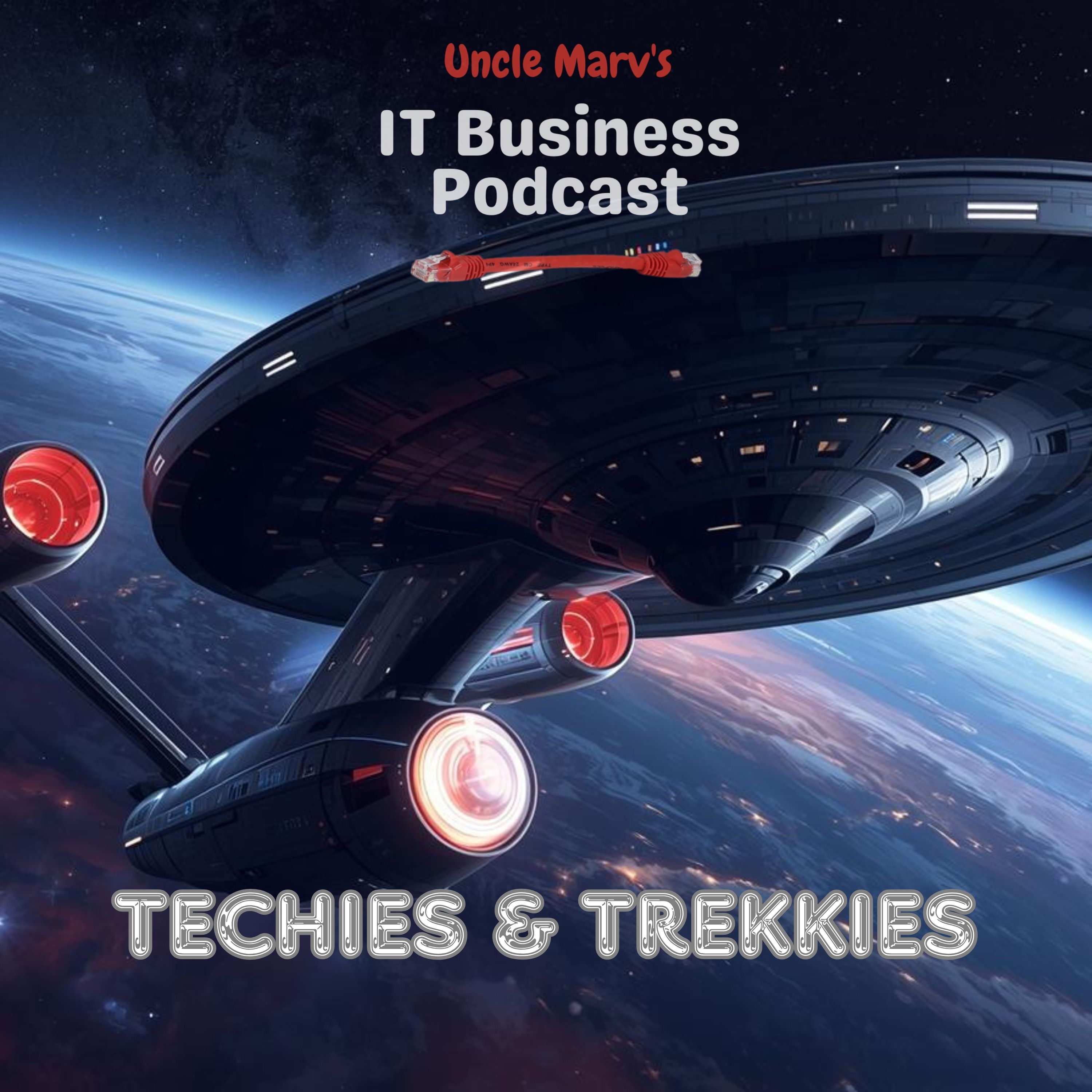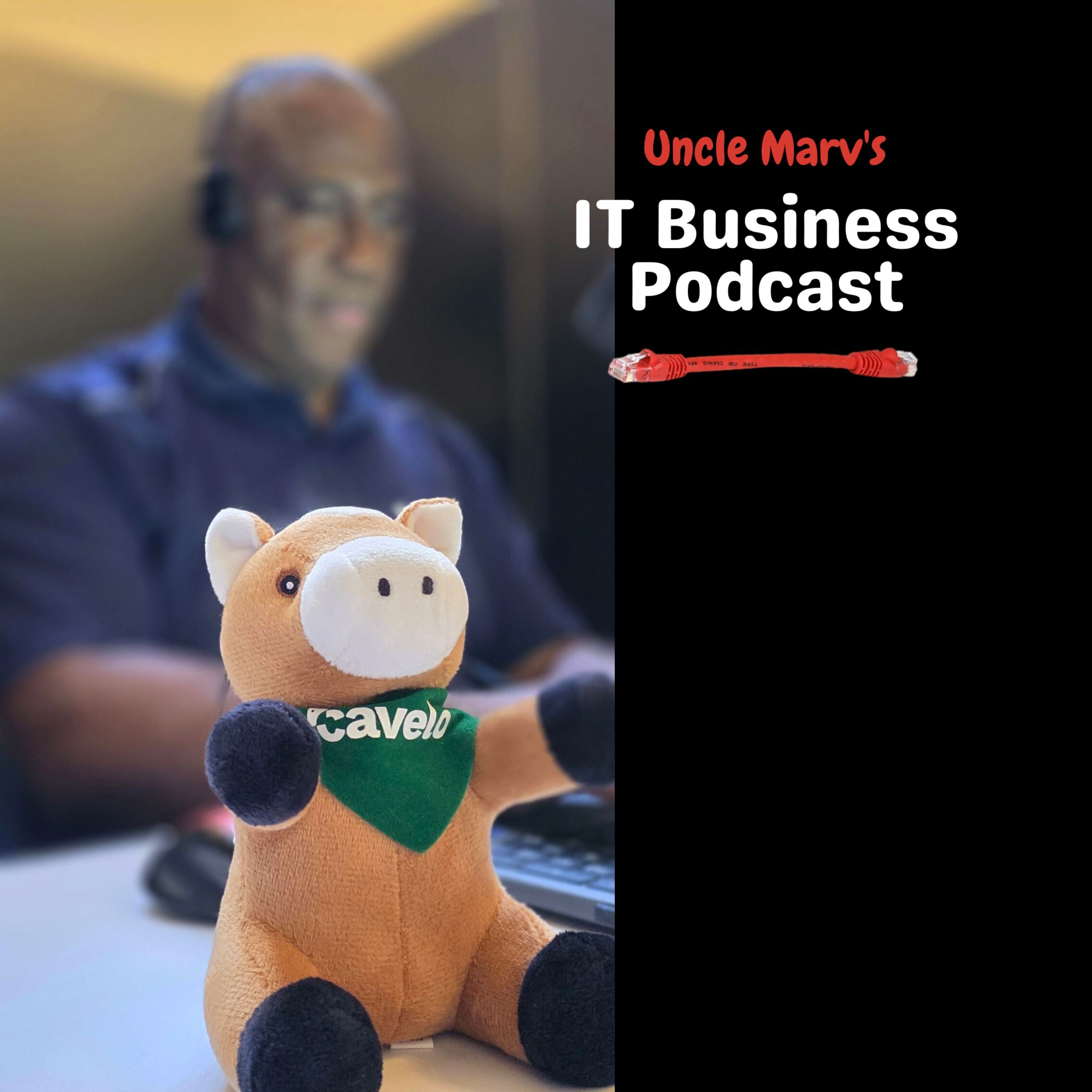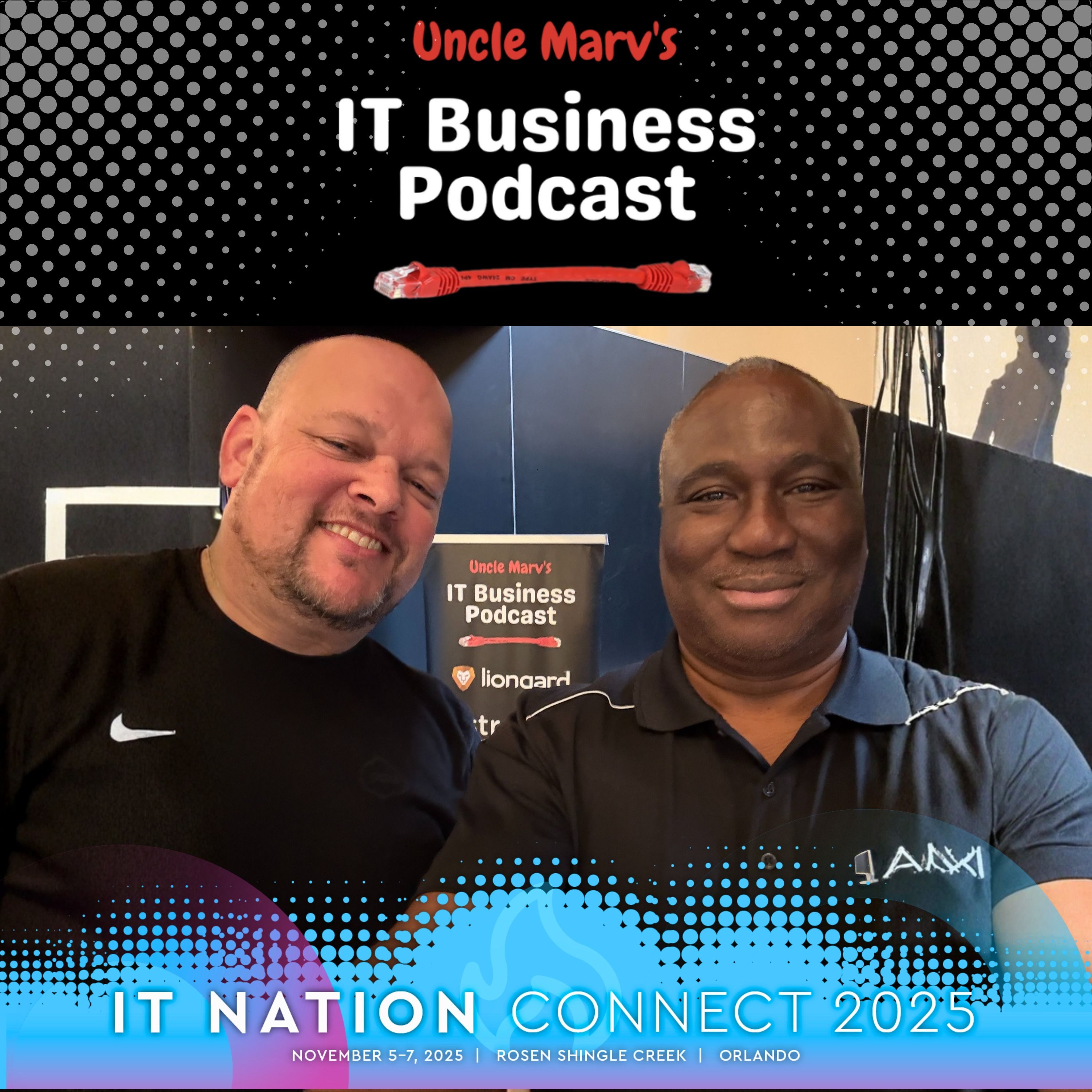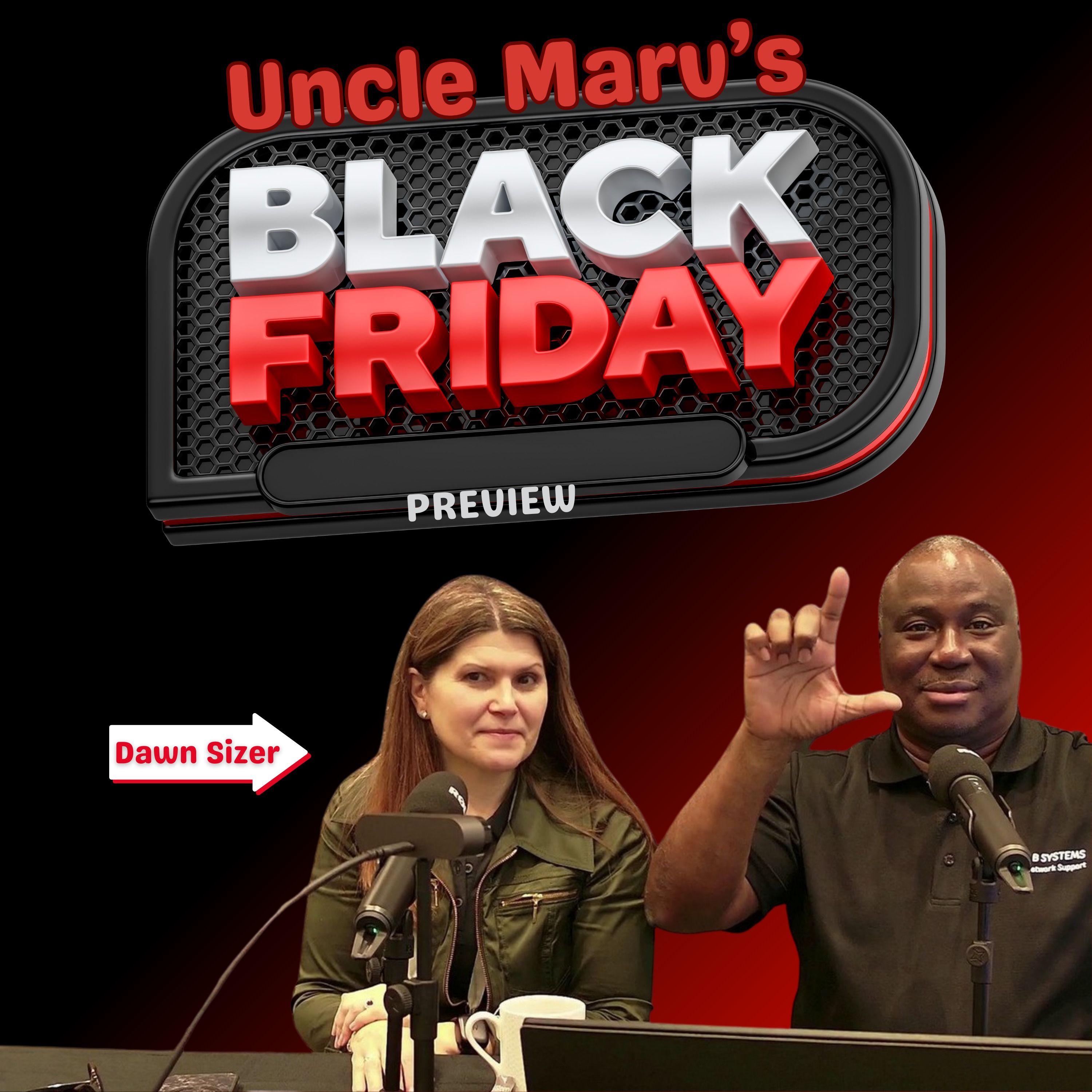Auvik vs Domotz: Final Roundup (EP 890)
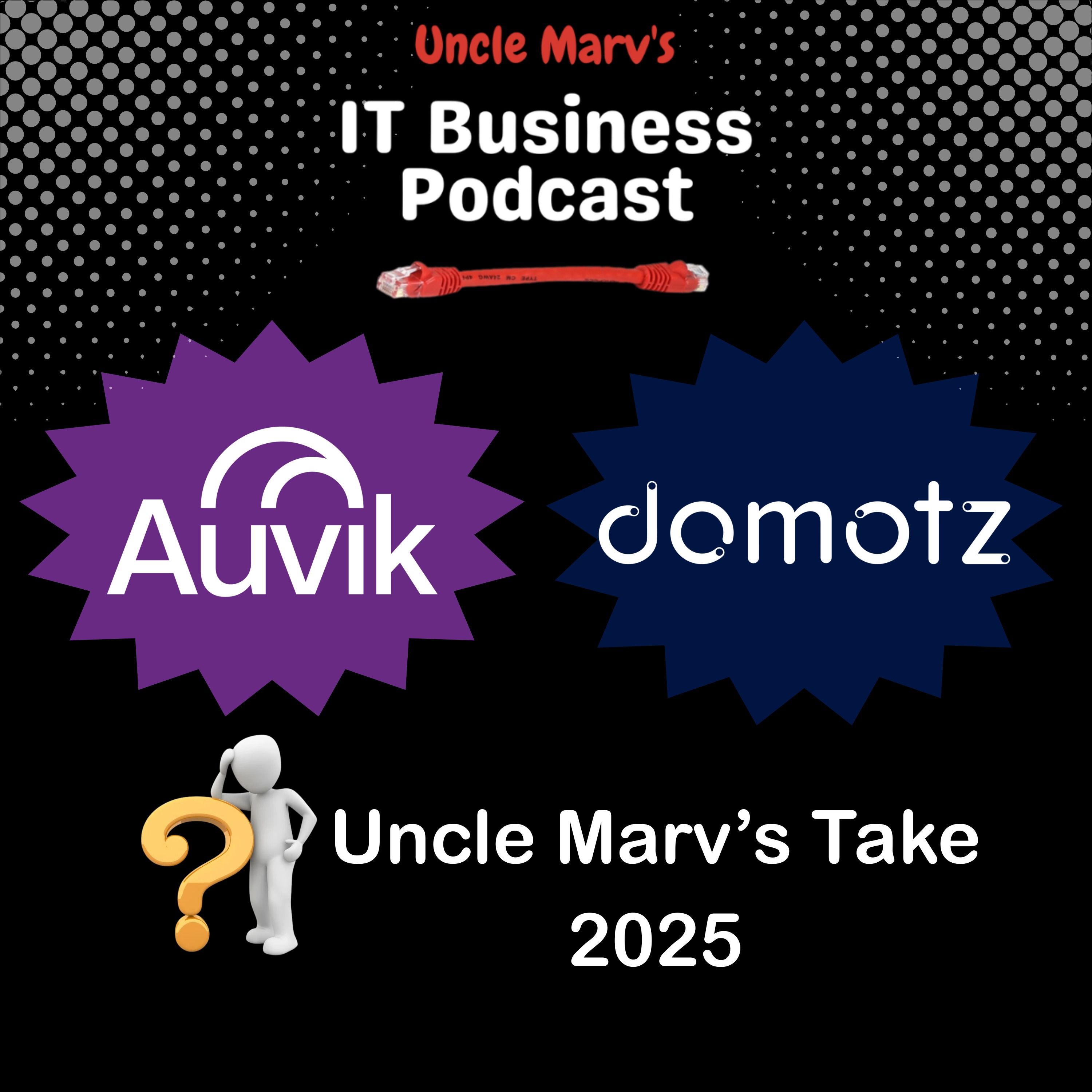
After months of interviews, testing, and listener feedback, I finally wrap up my Auvik vs. Domotz series. his episode closes the chapter on the comparison — a project that started in April with MSP guest interviews and continued with direct vendor responses.
Choosing a network monitoring platform isn’t one-size-fits-all. In this episode, I compare Auvik and Domotz head-to-head, sharing my hands-on experiences and candid MSP feedback. We’ll talk integrations, multi-site dashboards, NetFlow analytics, and reverse proxy simplicity. You’ll hear real-world pros and cons to help you avoid costly trial-and-error. And yes — I’ll reveal the tool I personally use and why.
Why Listen:
- Side-by-side field-tested comparison of Auvik & Domotz
- Learn about NetFlow analytics vs reverse proxy use cases
- Hear honest pros/cons straight from MSP peers
- Get insights on cloud vs on-prem solutions
- Understand when to pick deep analytics over fast rollout
Companies, Products, Books Mentioned (with clickable URLs)
- Auvik: https://www.itbusinesspodcast.com/auvik/
- Domotz: https://www.itbusinesspodcast.com/domotz
- Helient: https://www.helient.com/
- 365 Technologies Inc.: https://www.365tech.ca/
- IT Glue: https://www.itglue.com
- SonicWall: https://www.sonicwall.com
SPONSORS:
- Livestream Partner, ThreatLocker: https://www.itbusinesspodcast.com/threatlocker
- Legacy Partner, NetAlly: https://www.itbusinesspodcast.com/netally/
- Internet Provider, Rythmz: https://www.itbusinesspodcast.com/rythmz
- Production Gear Partner, Liongard: https://www.itbusinesspodcast.com/liongard
- Travel Partner: Bvoip: https://www.itbusinesspodcast.com/bvoip
- Travel Partner: TruGrid: https://www.itbusinesspodcast.com/trugrid
- Digital Partner, Designer Ready: http://itbusinesspodcast.com/designerready
SHOW MUSIC:
- Item Title: Upbeat & Fun Sports Rock Logo
- Item URL: https://elements.envato.com/upbeat-fun-sports-rock-logo-CSR3UET
- Author Username: AlexanderRufire
- Item License Code: 7X9F52DNML
=== Show Information
- Website: https://www.itbusinesspodcast.com/
- Host: Marvin Bee
- Uncle Marv’s Amazon Store: https://amzn.to/3EiyKoZ
- Become a monthly supporter: https://ko-fi.com/itbusinesspodcast
(0:22 - 5:10)
Hello friends, Uncle Marv here with another episode of the IT Business Podcast, the show for IT professionals and managed service providers, where we help you run your business better, smarter, and faster. So today, folks, this is a show that could have happened a long time ago. This is my roundup of the Auvik versus Domo series that I started a little while ago, that has taken me way too long to get done.
And I will try to explain why it took so long. But in the end, the basic fact is it took much longer than it should have. And it was really all because of me.
I mean, that's really what it is. I will say that one of the things that I wanted to do in this series was to be as open minded and as fair as possible. So that anything that I said during this would not lean one way or the other.
But many of you have been listening to me for a while, you've heard how I do work in my managed services business, you already knew kind of where I was leaning. So I was trying to balance that out and make sure it did not do an influence. And the bottom line is, look, I can kind of help show you what's out there, I can tell you what works for me.
But the bottom line is, you got to choose what works for you. You've got to do the demo, you got to take the trials and figure out how it works in your business. So that's what we're going to do here.
So I think one of the things that I tried to do was to make more of this and try to perfect my roundup. And I probably started this three, four times. And I get a few minutes into it and think, yeah, that doesn't sound right.
This doesn't feel good. I was trying to do a whole bunch of stuff that really, I'll be honest, it wasn't me. And so I had to put that on hold.
And another one of the reasons that I took the summer off from doing all this stuff is I just kind of had to sit back, center myself and figure out what is it that I need to be doing for me, my business, that then trailed into what needs to happen with the podcast, what needs to happen with my family, my personal life, my health, all of that sort of stuff. We'll talk about that a little bit later. But I do want to take a few minutes now and do this roundup, kind of close the chapter on Auvik versus Domotz.
And if you're watching this video or listening to this and you have no idea what we're talking about, well, back in April, this was when that started. And I started with a show called Auvik versus Domotz. It was episode 817, if you want to go back through the podcast and find it.
And I had two gentlemen on from managed service provider companies that were using one for each product. And I came up with the idea of I'm going to ask them the same questions and allow them to answer and not give any commentary, any feedback. And that would allow for you to hear the differences in the programs, the pros, the cons, the things that work for them.
And then I also followed that up with a response from representatives of each of the companies. And that was about a month later in May. I had people on from Auvik and I had someone on from Domotz.
And we basically just did a response video and talked about what the MSPs got right, what they may be mis stepped on and talked about all of the things that they were doing. And even then, I still tried to keep it fair, almost said fair and balanced, but basically fair to each side so that the series would simply provide you with an opportunity to hear and see what you needed to see from each of these tools. So let's first talk about that first show that I did.
And we had on Robinson Rocha from Heliant. And Robinson kind of gave us feedback here into Auvik. And he talked about Auvik's ability to provide easy access and actionable insights to clients, regardless of technical skill for his technicians.
(5:11 - 6:20)
They actually leveraged NetFlow analytics that helped them quickly pinpoint bandwidth issues and helping them save tremendous amounts of time in troubleshooting. They use Autotask and there was a tight integration with that so that the real time alerting and automated ticketing would also further reduce operational overhead. Auvik empowered their junior techs thanks to a simple UI and robust automation.
They gave access to their customers to be able to log into the dashboards and see stuff with very little training there. Robin said that onboarding was ridiculously easy, support is knowledgeable and responsive. And then he did talk about some desired improvements, including more syslog based customer alerting.
So that is Auvik. Auvik, if you don't know, cloud-based network monitoring and management platform. It is designed for IT professionals.
(6:21 - 7:10)
Again, its core strengths, fast deployment, live network mapping, automated device discovery, and robust alerting features. So Robinson came on the show and talked about that. And then we also had Darcy Wilson from 365 Technologies, Inc.
And Darcy emphasized Domotz's reverse proxy and seamless document integration. Station updates that worked for them. Reverse proxy, meaning that from within the Domotz dashboard, you literally would click connect and whether it's RDP or HTTP, it would do a reverse proxy into the client device without having to do anything with the firewalls.
(7:11 - 8:11)
He also talked about the ease of setup and the ability to quickly roll out new client locations and get actionable intelligence available within an hour. He said that the platform excels at centralizing alerts and dashboards for multiple client locations, partner support, listen to user feedback, and help drive continuous improvements. And they also did desire something more of a unified multi-site dashboard.
And that was, if I remember correctly, each site location was technically a different site inside of Domotz. And he wanted to be able to have a main customer site with different locations underneath. And that way you could see all the locations in one dashboard for that particular client if they had multiple locations, whereas now you have to go to each site individually.
(8:12 - 9:57)
So those were the things that came up there. So of course the features, if we recap those real quick for Auvik, fast deployment, easy setup, powerful NetFlow traffic analysis, tight integration with PSAs, intelligent alerting, automated configuration backups and compliance tracking, good customer support and partner engagement, and affordable for MSPs with billable versus non-billable service models. And I did some poking around with some folks just to get some feedback outside of the show.
And some of the things that came up as cons that people mentioned, and I won't say names to tell you who they were that said that, but pricing could be high for SMBs and small sites. Alerts require a lot of tuning, can be very noisy when you first deploy. The one thing is the cloud model requires reliable Internet specifically at the client location.
So if they've got broadband, DSL or whatever, you might have some trouble there. There were a couple of complaints about sales and support responsiveness. And then of course an occasional login or false alert issue.
So those were the things that came up there. And then if we talk about the features of DOMOTZ, DOMOTZ has an intuitive interface, fast onboarding. We mentioned the secure remote access via the reverse proxy, so no open ports in the firewall.
(9:58 - 10:48)
Dynamic documentation with IT Glue, basically simultaneous both ways sync. The multi-site dashboard, comprehensive monitoring beyond classic devices, so they're heavy on IoT, printer security cameras, all of that stuff. There is a hardware agent, basically a DOMOTZ box that can be put on site for turnkey rollouts.
And they also talked about good partner and customer service, a very responsive support for improvement. Negatives for DOMOTZ included pricing per site can be high for small installs. Some feel that the product is still maturing, mentioning feature gaps when it comes to SNMP templates and integrations, etc.
(10:49 - 11:05)
This was very specific. There were issues cited with iDRAC and iLo with some remote device integrations. And again, the request for more unified dashboard for multi-site locations there.
(11:06 - 11:21)
I also put together a little chart here. It's obviously going to be tough to see if you're watching the video here. I don't know if I'm going to be able to put this in a download from the website or not, but most of the features are common to both of those.
(11:22 - 11:43)
If you want to look at things like NetFlow analytics, ticketing integration, syslog capability, those are going to be more unique to AUVIK. The reverse proxy hardware agents are going to be more unique to DOMOTZ. And in fact, I'll show the box here in just a minute.
(11:44 - 12:07)
But everything else that I could come up with, they're very similar. Now, they obviously work in different ways, but when it comes to integrations, both of these companies have a ton of integrations. And it looks like both of them have added a ton even since we started this AUVIK versus DOMOTZ series here.
(12:07 - 12:54)
So if you wanted to go and look at either of these products, if you don't have them already, if you want to see what integrations come into your stack so that you can literally have this work with that, you're going to find plenty of integrations with both of these sites. DOMOTZ, somebody mentioned the maturity level here, and I think that really comes from the MSP perspective. DOMOTZ really has a very large footprint when it comes to other service provider industries, specifically when it comes to IP cameras, when it comes to sensors inside of IoT environments and stuff like that.
(12:55 - 13:31)
The MSP space has been kind of, I don't want to say added recently, but if you go look at other businesses and other companies that are doing stuff, a lot of them are using DOMOTZ for that. I mentioned the camera integrations, the switches, they probably have more camera integrations than most of you have integrations with your other platforms and stuff. Audio and video multimedia, another thing that they have a lot of integrations in that we as MSPs are not necessarily used to.
(13:32 - 13:45)
So that is that. So the bottom line is, again, I mentioned that both of them I think will work for the majority of MSPs. It's just a matter of your preference.
(13:45 - 14:13)
Now, you want to know what I use. Some of you that have followed me know that I'm a DOMOTZ guy, and I will finally come out and say that in this series. I started with DOMOTZ back in 2019, the year before the year of our COVID, and I don't remember exactly what it was that pushed me to them as opposed to anybody else.
(14:13 - 14:31)
But they had a very simple model. They had a box that you could take and put on location, and I will show you a box that I have here. One of the things that probably two or three months after I started using them was that I could white label the box and put my logo on it.
(14:32 - 14:45)
It's a very simple box. You just simply plug it into the network, activate it, and it starts going out and monitoring stuff. For me, this was key for prospecting.
(14:45 - 14:55)
I could say, just let me put this on your network. I don't have to log into anything. I don't have to touch your server or anything like that, and it was easy for them to say, sure.
(14:55 - 15:20)
And then, of course, afterwards, swing by, pull it out, and everything is done. But for me, it was easy, and part of that is looking at the two now. If I had to say, I was starting from scratch, and I was just starting my MSP, and I wanted to find a network device monitoring tool, it would be hard to choose between them.
(15:20 - 15:46)
And here's why I say why. Auvik has some very cool enterprise-level tools that, for instance, when I hooked it up here and did the trial, it gave me some alerting out of my SonicWall appliance that I didn't think to look for, and I don't even know if I can turn it on in Domotz. I didn't look, but it gave me things such as high memory utilization.
(15:48 - 16:20)
There was something else that I... Did I write the notes here? No, of course not. But that was one of them, a high memory utilization, which, of course, why would I worry if there was high memory utilization? Well, of course, that could be a sign of a lot of things. It could be a sign of too many connections on your firewall, if you've got open VPN connections that are happening, if you've got brute force attacks happening, that sort of thing.
(16:20 - 16:44)
So that was something that came up. There was some traffic analysis that I... Domotz does have some bandwidth monitoring, so you can, on a regular basis, have Domotz check for what is your current upload and download speed. However, Auvik has some much more integrated net flow stuff that you can actually see what is the traffic.
(16:45 - 16:52)
You can see the traffic in real time. You can see the historical traffic. It's not just a snapshot test sort of a thing.
(16:52 - 17:09)
So if you've got some enterprise level net flow stuff that you want to do with there, Auvik is going to be that choice. If you want something that is just simple, go out, check devices, tell me what they are. And oh, yeah, if I want to test for stuff, I can.
(17:10 - 17:28)
They do have SNMP monitoring. They do have sensors that you can turn on. There is a lot of monitoring that Domotz does, but I think where it's better for me as a smaller boutique MSP, if I were going after larger businesses, enterprise businesses, Auvik would be the tool.
(17:28 - 17:51)
And I would say this, that if I had to guess, well, I shouldn't say guess. If I had to report as to what the traffic was that I had seen for these shows, because I had a link both for Auvik and a link for Domotz, that if you wanted to look at these products, use my links. And I was able to track their usage.
(17:51 - 18:06)
And Auvik traffic was two to one in terms of people checking them out. Now, I have no idea who signed up, how many. I'm not getting money from Auvik or Domotz through this thing.
(18:07 - 18:25)
So yes, you're using my link, but that's only for us to track the traffic in terms of who watched the show and who contacted them because of the show. But I'm not getting anything. So don't think that I'm pushing you to do that just for that.
(18:25 - 18:38)
Again, you have to make your own choice. As I said, do the demo, try the trials and make the decision that works for you. That's pretty much it.
(18:39 - 18:56)
Again, I do want to give, I should probably give a formal apology to both the Auvik and the Domotz folks. It took a lot of work to get this together, especially the first show with the MSPs. They helped quite a bit.
(18:56 - 19:08)
It wasn't just something where I sent out a simple request and boom, it was set up. It took some time. So there were some Auvik people and some Domotz people behind the scenes that really helped me put that together.
(19:09 - 19:21)
They've been waiting for this and it should have happened sooner. Bottom line, I just was either trying too hard or delaying and whatever. But it's out.
(19:22 - 19:34)
We're done. And you hear my thoughts and you know what I use. But the reasons that I use them are most likely are not going to be the reasons that you choose one for you.
(19:34 - 19:47)
So I hope that we can do another roundup with this and continue the discussion, Auvik versus Domotz. I did get a lot of feedback from folks. I would like to continue to get feedback.
(19:48 - 20:04)
So the call to action, I guess, would be for you to, again, go to my link. There is one for Auvik in the show notes and there is one for Domotz. Do the trials if you're not using one or if you want to see what the other one has.
(20:05 - 20:24)
Do that. Send me a message and let me know what you thought of this Auvik versus Domotz. Did I do a good job with comparing the two and, you know, giving you guys the information that you needed to make a decision? Or if I missed the mark, tell me why.
(20:24 - 20:33)
Tell me what you look for. Tell me what you want me to do in future shows and we'll do them. But for all of the people that helped me put this together, thank you.
(20:33 - 20:43)
And for those of you watching and listening, thank you as well. That's going to do it for this. We'll be back with more shows, of course, on other topics and other series.
(20:44 - 20:47)
Thank you all. See you soon. Until next time.
(20:48 - 20:48) Holla!







































